 |
|
|
| |
 |
|
|
| |
|
The Wheel -
1880 -
1885 -
1890 -
1895 -
1896 -
1897 -
1899 -
1900 -
1905 -
1910 |
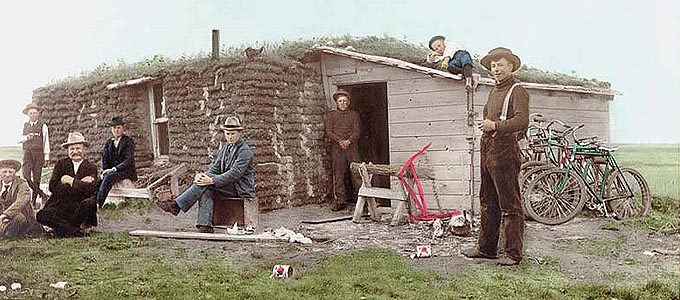 Handpainted photograph by John McCarthy, 1896 - Library of Congress Christ Nelson sod house, Soper Post Office, North Dakota, 1896 | ||
|
What's changed in a hundred years? Dirt house. Dirty old -- and young -- men. Dirt bikes.
Then, they were daring wheelmen, scorching along dirt tracks, terrifying horses and livestock long before automobiles and attracting the attentions of the opposite sex with their revolutionary behavior. Today, they could be posing for their local mountain bike club photo, but they're too overdressed and sod houses have gone the way of the plains buffalo. The men are as ordinary as their descendants and their bicycles look remarkably like today's newest hardtail trail models. This photograph was taken at the peak of the bicycle craze that swept America in the 1890s. The shiny bicycles cost as much as $150 which represented four to six months' wages for the average worker. | ||
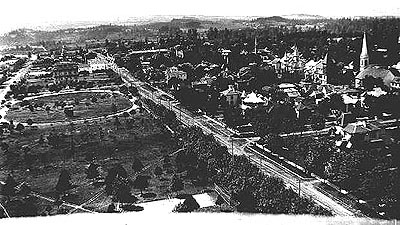 Photographer unknown, Marion County Historical Society Salem Public Library Historic Photograph Collections 1896 A photograph of Willson park taken from the capitol dome, looking west. The Marion County Courthouse, a quarter-mile bicycle racing track, and several fine residences show prominently. The racing track marks the site where the U.S. Post Office, now the Oregon Executive Department building, was to be constructed in 1903. Salem City Hall, at Chemeketa and High Streets, is under construction in the center background. The bicycle track reflects the popularity of the bicycle and the poor quality of streets and roads. Organized bicycle racing began in New York's Madison Square Garden where as many as 100,000 spectators paid to watch six-day races in which winning riders covered as much as 2,759 miles. The first six-day bicycle race for women began on Jan. 6, 1896 at Madison Square Garden. The New York races were discontinued after 1939. 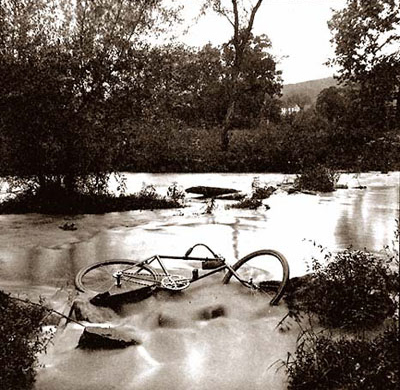 Photograph by Francis L. Cooper Francis L. Cooper - Avocational Photographer, 1874-1944 circa 1896 From 1896 to 1901, Francis L. Cooper regularly traveled to Juniata County to hunt, fish, bicycle, court his wife, and photograph landscapes. He was one of the first to see art in the ordinary. A medical student at the University of Pennsylvania, Cooper began visiting the Milliken farm in Pleasant View, Penn. in 1896. He took bicycle/photographic trips on the backcountry roads with his financee, Gertrude Crawford, a local doctor's daughter whom he married in 1900. Cooper was fascinated with Tuscarora Creek and its ability to reflect light and shapes, the forms created by the trees and the Tuscarora Mountains. One day, he threw his bicycle into the creek for reasons unknown. A slow shutter speed and a tripod allowed him to blur the flowing water and turn an accident -- or a deliberate incident -- into art we can appreciate today. Enjoy a scholarly appreciation of Cooper's work and view many of his other rural Pennsylvania photographs capturing moments and people at the turn of the century in this appraisal by Jay Ruby. He is a Professor of Anthropology and director of a graduate program in the anthropology of visual communication at Temple University in Philadelphia. He has completed The Photographic World of Francis Cooper: Not A Bad Shot, a book-length study published by Penn State University Press. |
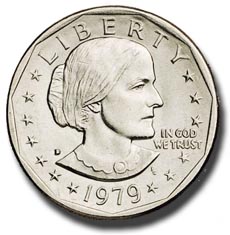 It has done more to emancipate women than anything else in this world. It gives her a feeling of self-reliance and independence the moment she takes her seat; and away she goes, the picture of untram- meled womanhood. I stand and rejoice every time I see a woman on a wheel . . ." Suffragette Susan B. Anthony in a Feb 2, 1896 speech, quoted in the New York World and in the Life and Work of Susan B. Anthony by Ida Husted Harper. For more about the pioneering feminist, visit the Susan B. Anthony House, or read about the landmark legal case, United States v. Susan B. Anthony: 1873, that led to the adoption of women's suffrage with the 19th Amendment to the U.S. Constitution. For more about women's cycling, America's first media darling, "bicyclettes," bloomers, teatotalers and a bicycle named Gladys, read Nellie & Susan & Frances. 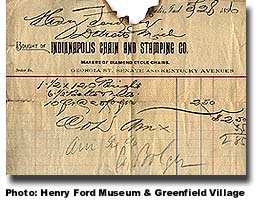 "As a social revolutionizer it has never had an equal. It has put the human race on wheels, and has thus changed many of the most ordinary processes and methods of social life. It is the great leveler, for not 'til all Americans got on bicycles was the great American principle of every man is just as good as any other man, and generally a little better fully realized. All are on equal terms, all are happier than ever before, and the sufferers in pocket from this universal fraternity and good will may as well make up their minds to the new order of things for there will be no return to the old." 1896: The Auto Next: 1897 See 19th Century Bicycle News for a selected bibliography and historical resources online, or use the links to find other sites of interest. All rights reserved. | |